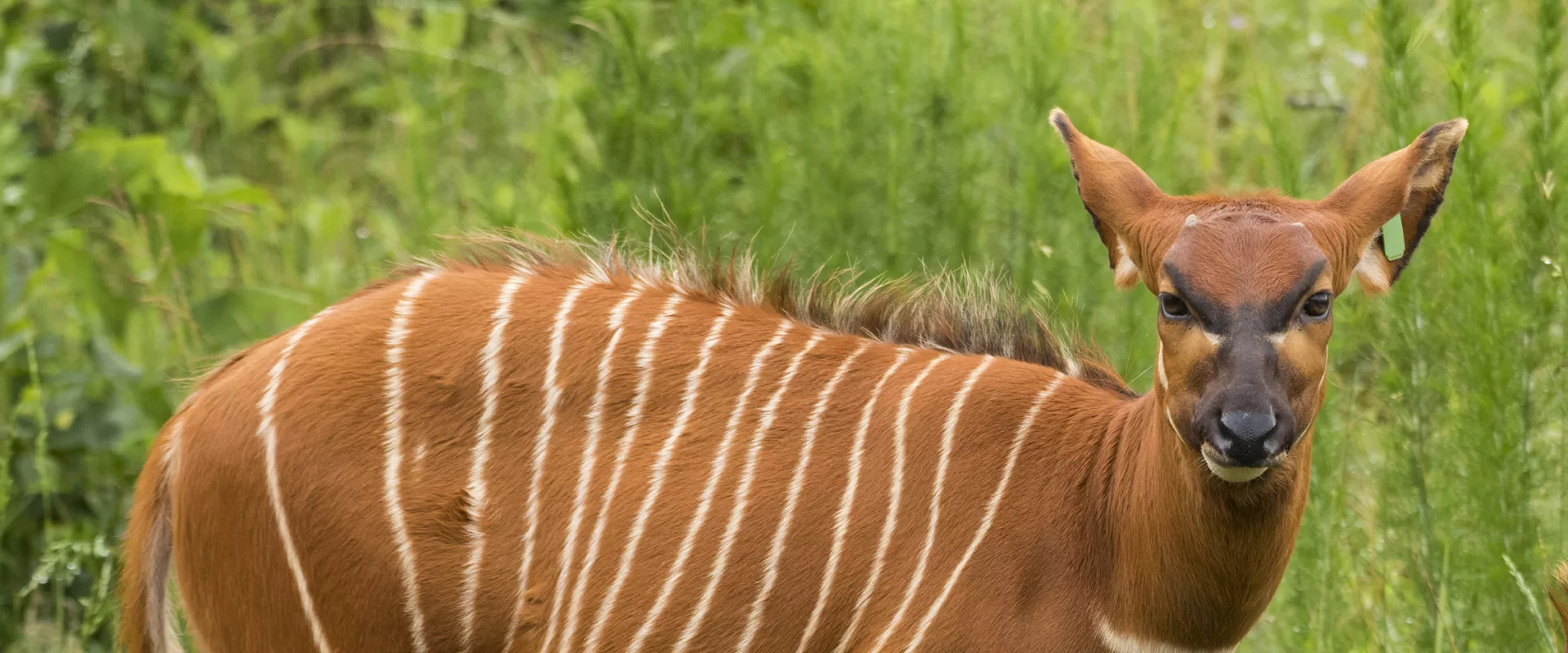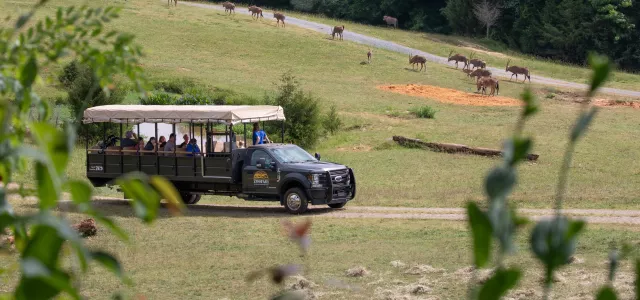About:
Did you know bongos are primarily nocturnal animals? Learn more about bongos.
Care & Wellness:
Living on a 40-acre habitat can make medical care difficult. Training encourages the animals to participate in their own care and wellness. The bongo voluntarily enters a chute where keepers can weigh them and safely perform vaccinations, blood draws, and ultrasounds.
Behavior:
- Males live mostly solitary lives while females may travel in small herds of up to 24 individuals.
- When they run through the brush, their heads are thrown back so horns do not get tangled in the brush.
- Distinctive patterns may help them identify individuals.
Endangered Status
- Extinct in Wild (EW)
- Critically Endangered (CR)
- Endangered (EN)
- Vulnerable (VU)
- Near Threatened (NT)
- Least Concern (LC)
- Not Evaluated (NE)




